Boeing and Bell's 'flying cars' will be the first of many
Urban air mobility is taking off
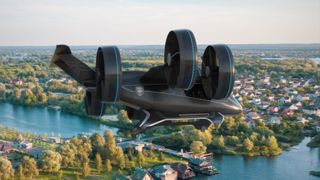
Everybody hates traffic, but would you get in a flying car to avoid it? What about an autonomous helicopter, or a drone aircraft piloted remotely? Welcome to the world of electric vertical takeoff and landing (eVTOL) aircraft that, semantics aside, is getting some serious support from both manufacturers and governments.
Could we soon see flying cars in our cities? Aircraft-maker Boeing announced last week that it's just tested a prototype of a 'flying car' to advance the safety and technology of urban air mobility vehicles that until recently have been a pipe-dream. At CES 2019 a few weeks ago, Bell Helicopter showed-off a full-scale 'air taxi' named Bell Nexus that will – you guessed it – "redefine air travel".
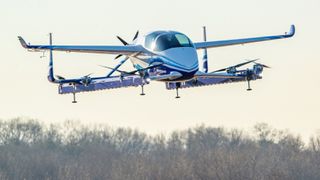
How many flying cars are there?
There are multiple companies working on ‘urban air mobility’ vehicles, including Boeing’s rival Airbus, Ehang, Volocopter, Kitty Hawk, Uber Elevate, Terrafugia and PAL-V. With over 100 prototypes and some serious interest by governments around the world, aerial taxis and deliveries by flying car look to be on the cusp of reality.
Some think such vehicles – which have a range of about 50 miles and are resolutely electrically powered – are the next-but-one step where autonomous electric vehicles get off the roads and into the air. In the short-term they could change the way we get around smart cities, particularly to and from airports, and how deliveries are made in urban areas.
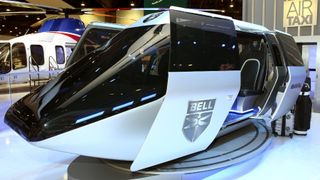
What are Bell and Boeing doing?
Last week, Boeing successfully completed the first test flight of its autonomous passenger air vehicle prototype in Manassas, Virginia. Called Boeing NeXt, this urban air mobility project saw a 9x8-metre craft complete a controlled vertical takeoff, hover and landing during a flight that also tested the vehicles autonomous functions and ground control systems. Further tests are scheduled, with the electrically propelled vehicle designed to travel 50 miles.
"This is what revolution looks like, and it's because of autonomy," said John Langford, president and chief executive officer of Boeing subsidiary Aurora Flight Sciences. "Certifiable autonomy is going to make quiet, clean and safe urban air mobility possible."
Meanwhile, the Bell Nexus is powered by a hybrid-electric propulsion system that features a powered lift concept using six tilting ducted fans. The system also includes 'pods' for passengers that can be attached to the propulsion structure.
Get daily insight, inspiration and deals in your inbox
Get the hottest deals available in your inbox plus news, reviews, opinion, analysis and more from the TechRadar team.
"As space at the ground level becomes limited, we must solve transportation challenges in the vertical dimension – and that’s where Bell’s on-demand mobility vision takes hold," said Mitch Snyder, president and CEO of Bell. "The industry has anticipated the reveal of our air taxi for some time."
Are flying cars for passengers
Yes, but although this flight of Boeing's eVTOL aircraft is designed to carry passengers, the Boeing NeXt portfolio also includes an unmanned fully electric cargo air vehicle (CAV). Designed to transport up to 500lb, Boeing's CAV completed its first indoor flight last year and will transition to outdoor flight testing in 2019.
"Boeing was there when the aviation industry was born and in our second century, we will unlock the potential of the urban air mobility market," said Steve Nordlund, vice president and general manager of Boeing NeXt. "From building air vehicles to airspace integration, we will usher in a future of safe, low-stress mobility in cities and regions around the world."

What about 'flying trucks'?
Amazon's crazy idea to deliver parcels by drone is quickly becoming a mainstream ambition. Take Yamato in Japan, a company famous for its cat-and-a-kitten logo on its delivery trucks. As reported by the Japan Times last October, Yamato has agreed to develop an unmanned cargo aircraft – ‘flying truck’ – with none other than Bell Helicopter. The vehicle could carry 453kg. and travel at 160kph, take-off and land vertically, and cruise horizontally.
“Companies are scrambling to figure out last-mile delivery, sometimes even incentivizing the customer to pick up from the store,” says Ravi Shanker, equity analyst at Morgan Stanley covering the North American transportation industry. “Drones and VTOLs could be part of the evolving solution of last-mile parcel delivery challenges.”
Why Japan could see flying cars and trucks first
The Japanese government appears to be getting serious about autonomous aerial vehicles in cities. Could Tokyo's skies by buzzing with aerial taxis and delivery trucks by the mid-2020s? That's the goal, with terrible traffic around Tokyo the main impetus, though better serving Japan's many hard-to-reach mountain and island communities is another reason why flying cars could be worth investing in.
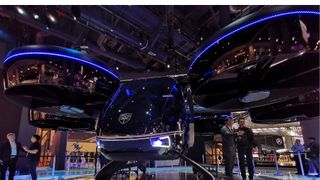
Are flying cars really a serious proposition?
Morgan Stanley thinks so. Its research paper last week predicted that a US$1.5 trillion global autonomous urban aircraft industry is possible by 2040.
“We’re seeing opportunities for a growing fleet of electric, shared, and autonomous VTOL aircraft or other large terrestrial drones,” says Rajeev Lalwani, lead analyst at Morgan Stanley covering US airlines, aerospace and defense, and aircraft lessors
“The market could likely begin as an ultra-niche add-on to existing transportation infrastructure, similar to how helicopters operate today [and] could later transform into a cost-effective, time-efficient method of traveling short to medium distances, eventually taking share from car and airline companies.”
Why is this happening now?
As well as an impetus to use the clear skies above our heads to transport goods, and possibly people, much more quickly and efficiently as cities become gridlocked, the current interest in developing flying cars and trucks is all about technology.
A lot of complementary tech is now under development; think artificial intelligence, drone technology, drone package delivery tests, more efficient batteries, autonomous driving systems, satellite communications, 3D printing, computer processing power – it's all coming together. However, if you think electric cars have a problem of 'range anxiety', that goes double (at least) for electrically-powered air vehicles.
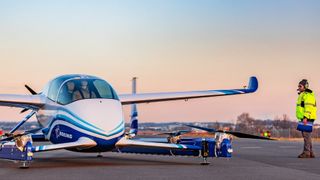
Flying cars' biggest challenge
Boeing claims that it went from design to working prototype in just one year, and with multiple other companies working on passenger and cargo-capable ETOLs, so-called flying car' may seem to be on the horizon. However, no ETOL will get off the ground containing test crew, let alone members of the public, unless regulatory bodies are 100% happy about safety. That will take a lot of time. So will creating flying cars that are whisper-quiet, carry a lot of weight, hover without problems, and have a range that far exceeds their planned journey time.
Even more challenging is that a new mobility ecosystem will have to be created that caters for the coexistence of both autonomous and piloted air vehicles. "Urban air travel is coming closer to the masses through recent advancements in technology and software," says Bell's press release. "The critical last step is designing a flight control ecosystem that allows individuals to safely and efficiently operate urban air vehicles."
It’s a common refrain among the flying car community. “The challenge has always been to develop a commercially viable flying car not simply a futuristic concept,” said Robert Dingemanse, CEO of PAL-V. “The journey is much more challenging than simply designing a flying car since the regulatory framework demands safety of each and every manufacturer.”
So expect to see Amazon's drones first, followed by flying trucks buzzing around city skies delivering packages long before people can take a robotic ride.
Jamie is a freelance tech, travel and space journalist based in the UK. He’s been writing regularly for Techradar since it was launched in 2008 and also writes regularly for Forbes, The Telegraph, the South China Morning Post, Sky & Telescope and the Sky At Night magazine as well as other Future titles T3, Digital Camera World, All About Space and Space.com. He also edits two of his own websites, TravGear.com and WhenIsTheNextEclipse.com that reflect his obsession with travel gear and solar eclipse travel. He is the author of A Stargazing Program For Beginners (Springer, 2015),
Most Popular


